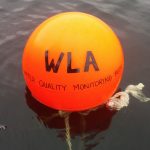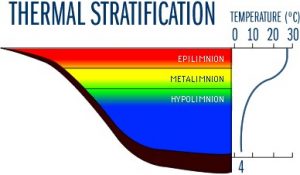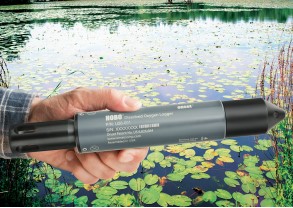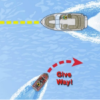 You may have noticed a small red buoy on the south end of the lake, about mid-way between Watchic Road 5 and East Eleanor Ave. This happens to be the deepest part of the lake (~40 feet or 12.5 m), and an important area for us to monitor.
You may have noticed a small red buoy on the south end of the lake, about mid-way between Watchic Road 5 and East Eleanor Ave. This happens to be the deepest part of the lake (~40 feet or 12.5 m), and an important area for us to monitor.
The data gathered from the system connected to this buoy will allow us to better understand water quality and track changes in order to more quickly act to remediate or prevent issues. Please use caution when boating near the buoy.
Attached to this buoy are three Onset HOBO® dissolved oxygen loggers that use the latest in optical sensor technology, making them cost effective, simple to maintain, and easy to read. The loggers are placed at 2, 5, and 11 meters below the surface. These depths equate to critical layers in the water column, which becomes thermally stratified during the peak summer season: epilimnion (warm, surface layer), thermocline or metalimnion (markedly cooler, more dynamic middle layer), and hypolimnion (cold, bottom layer). Thermal Stratification diagram courtesy of Lakeassess.org.

With these loggers, we can now gather detailed information regarding dissolved oxygen and water temperature at critical depths in the water column throughout the year. This will allow us to track thermal stratification, pinpoint spring and fall turnover, and determine the extent and duration of anoxia (depleted oxygen) at the bottom. Fall turnover occurs when air temperatures cool the surface water, causing its density to increase; the heavier water sinks, forcing the lighter, less dense water to the surface. This process is critical for the natural exchange of oxygen and nutrients between surface and bottom layers in the lake. While naturally-occurring in deeper, stratified lakes, anoxia (<1 ppb) can release sediment- and iron-bound phosphorus that fuels algal growth when mixed with the upper euphotic (sunlit) zone. It also leads to the buildup of chemically-reduced compounds, such as ammonium and hydrogen sulfide (H2S, rotten egg gas), which can be toxic to bottom-dwelling organisms.

Similar, but more advanced (wireless, solar-powered) systems are in use at Highland Lake (Westbrook, ME) by the Lakes Environmental Association (LEA; http://mainelakes.org/?p=6525) and at several Belgrade lakes (ME) by Colby College as part of the larger Global Lakes Ecological Observation Network (GLEON; http://web.colby.edu/lakes/80-2/).
Field checks will be conducted about every 4 weeks and reported on annually. Over the long term, this data will help our understanding of water quality changes and guide any remediation efforts needed.
So… please do your best to avoid the buoy when out on the lake!


